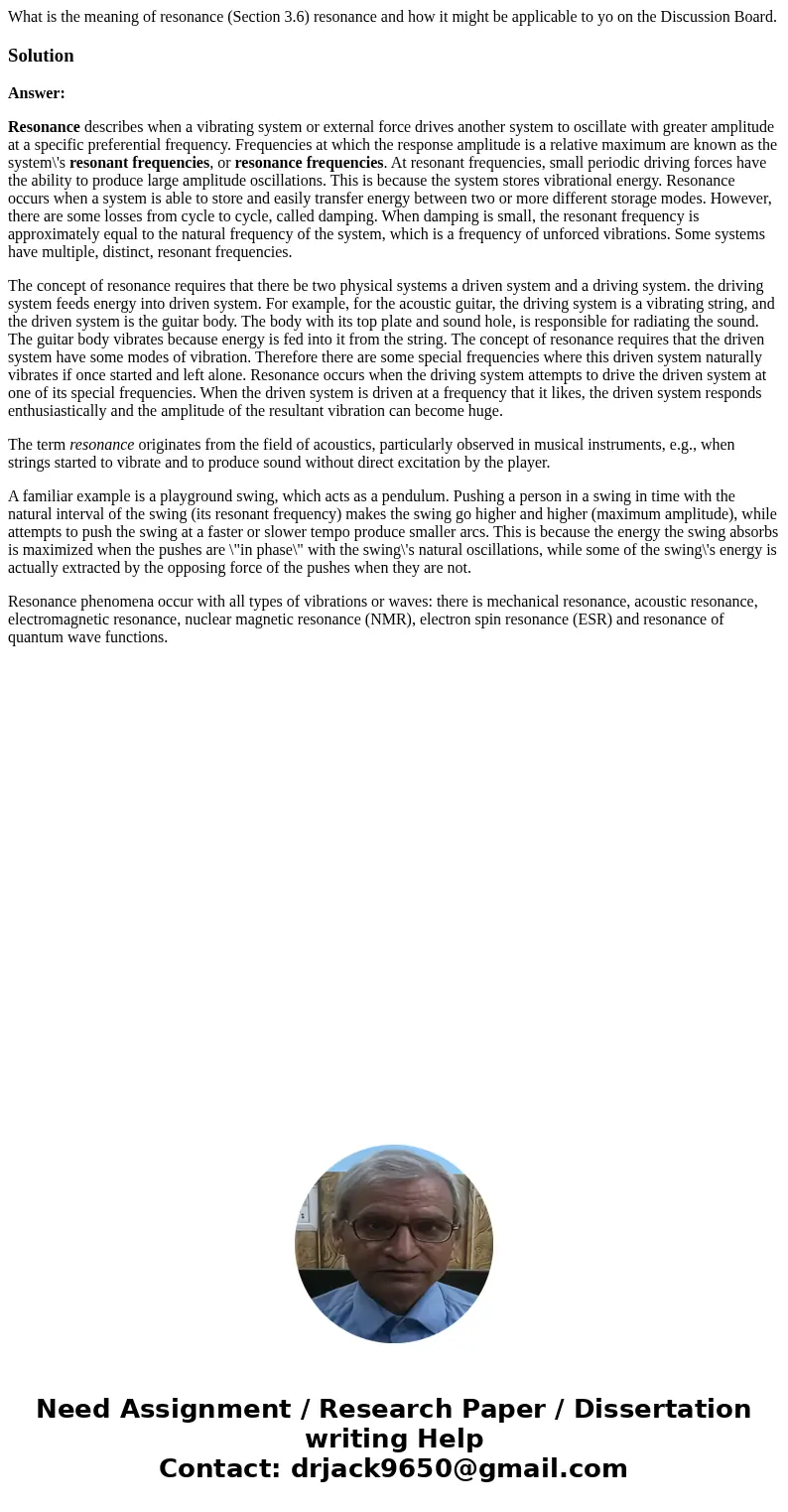What is the meaning of resonance Section 36 resonance and ho
Solution
Answer:
Resonance describes when a vibrating system or external force drives another system to oscillate with greater amplitude at a specific preferential frequency. Frequencies at which the response amplitude is a relative maximum are known as the system\'s resonant frequencies, or resonance frequencies. At resonant frequencies, small periodic driving forces have the ability to produce large amplitude oscillations. This is because the system stores vibrational energy. Resonance occurs when a system is able to store and easily transfer energy between two or more different storage modes. However, there are some losses from cycle to cycle, called damping. When damping is small, the resonant frequency is approximately equal to the natural frequency of the system, which is a frequency of unforced vibrations. Some systems have multiple, distinct, resonant frequencies.
The concept of resonance requires that there be two physical systems a driven system and a driving system. the driving system feeds energy into driven system. For example, for the acoustic guitar, the driving system is a vibrating string, and the driven system is the guitar body. The body with its top plate and sound hole, is responsible for radiating the sound. The guitar body vibrates because energy is fed into it from the string. The concept of resonance requires that the driven system have some modes of vibration. Therefore there are some special frequencies where this driven system naturally vibrates if once started and left alone. Resonance occurs when the driving system attempts to drive the driven system at one of its special frequencies. When the driven system is driven at a frequency that it likes, the driven system responds enthusiastically and the amplitude of the resultant vibration can become huge.
The term resonance originates from the field of acoustics, particularly observed in musical instruments, e.g., when strings started to vibrate and to produce sound without direct excitation by the player.
A familiar example is a playground swing, which acts as a pendulum. Pushing a person in a swing in time with the natural interval of the swing (its resonant frequency) makes the swing go higher and higher (maximum amplitude), while attempts to push the swing at a faster or slower tempo produce smaller arcs. This is because the energy the swing absorbs is maximized when the pushes are \"in phase\" with the swing\'s natural oscillations, while some of the swing\'s energy is actually extracted by the opposing force of the pushes when they are not.
Resonance phenomena occur with all types of vibrations or waves: there is mechanical resonance, acoustic resonance, electromagnetic resonance, nuclear magnetic resonance (NMR), electron spin resonance (ESR) and resonance of quantum wave functions.

 Homework Sourse
Homework Sourse